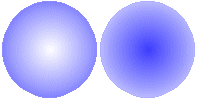
Interior Lighting
Color Perception
Color helps in the perception of the beauty of the interior design and in the adjustment of
the occupant's mood. The perceived color of the surface is determined not only by the color of
the surface, but also by the color of the light. Therefore, the type of lamp in the light fixture
can significantly impact the perception of the color of the object. This effect should be taken
into account when designing spaces such as show rooms and fitting rooms.
Color can impact the mood of the occupants; for example, bright and different colors in the
same space illustrate happiness. On the other hand, a monotone and dark color may give the
opposite impression. The character of the space may be altered by the color. For example, red gives
the impression of warmth and blue-green gives the impression of coldness.
Objects and Shapes
The perception of the object's shape differs with the light distribution on its surface
and with the configuration of the resulting shadows. The direction of the light beam can
easily affect the perception of the object's shape as shown in the following figure.

Also, the directed angled light generates shadows; therefore it is essential to make a
decision if these shadows are needed. Shadows will show the roughness of an imperfectly
finished flat surface. Uniform lighting on these surfaces can be implemented. This approach
should be used carefully because it can make a three dimensional object looks flat.
The combination of direct and uniform lighting is used in many cases. If the light is not
uniform on the surface, different areas will appear to be at different distances. Therefore, to
lighten the outer or the inner area of the flat surface will make this surface appear concave
or convex as shown below.

Space and Dimensions
A high level of illuminance in the space can give the impression of large volume. To focus
on the variety of internal design elements and to attract attention to specific spots in the
space, the lighting systems shall include different illuminance levels or lighting styles.
This approach is frequently used to isolate reception areas, stairs, exits, and waiting areas
in the space.
If the lighting system includes linear ceiling fixtures, the effect will
be the dimension enhancement in the direction of the lighting system as shown in the following
drawing.

We can get the impression of a high ceiling by good illumination of the ceiling or the
upper parts of the walls. Using the light or the light fixtures itself, we can easily focus
attention on the routine elements in the interior design or make the opposite effect.
Light has an effect on the physical nature of the structure. Poor illumination of columns
with a well-lighted ceiling deck will focus attention on the nature of the heavy columns (holder) and
the lightweight deck. By applying the opposite lighting arrangements, a special artistic effect
is generated from the impression of the distortion of the physical nature. Similar distortion
results when illuminating the area between two components of the interior elements. Lighting
the area between the column and the ceiling deck gives an impression that they are disconnected.
Lighting systems are used frequently to indicate the directions of the movement in the space.
This lighting guide can be achieved easily by increasing the illuminance level in the area where
people are expected to move. These areas include stairs, entrances, and most importantly, the
hallways.